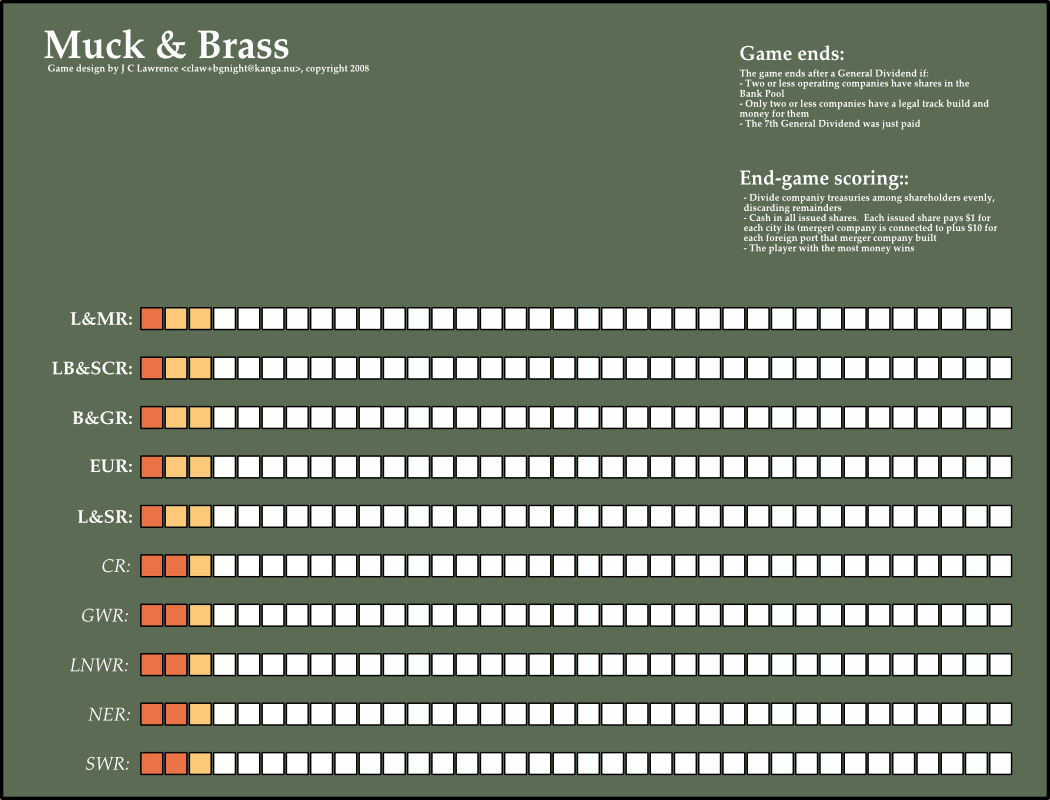Pampas Railroads order line (P50) -- second chance!
THE ORDER LINE IS NOW CLOSED. ALL AVAILABLE COPIES HAVE BEEN ACCOUNTED FOR!
The P100 for Pampas Railroads P100 sold out and still the orders kept on coming in! Winsome Games has kindly agreed to do yet another reprint, this time for at least 50 more copies. Due to the smaller print run, the additional commission to the BoardgameGeek marketplace and (frankly) the larger than previously estimated effort level these pre-orders take from me, there’s been a small US$5 increase in the S&H fees over the previous P100. The game order will be placed with Winsome Games when we reach 45 fully paid orders. As before, if the orders are still coming in thick and fast, I’ll delay placing the other until the order rate subsides.
If you are local to San Jose California and can collect the game directly from me, please use the following payment button to order Pampas Railroads (US$40 + US$5 S&H):
If you are elsewhere in the continental USA or Canada, please select the following payment button to order Pampas Railroads (US$40 + US$15 S&H):
For buyers in the rest of the world, please select the following payment button to order Pampas Railroads (US$40 + US$20 S&H):
The S&H charges are sufficient to cover up to two (2) copies. If you’d like to order 3 or 4 copies, please make multiple purchases. If you would like to order more than 4 copies, please contact me on BoardGameGeek (user: clearclaw) for specific S&H costs for such a larger order.
Note: Like the P100 edition, this reprint will also come with a standard linear income track rather than the first edition’s clunky 0-10 track with x1 and x10 markers for each company. This reprint will not come with crayons. Winsome Games has run out of crayons. You will need to supply your own drawing implements. Do not use Crayola or similar children’s crayons or dry-erase/whiteboard pens as they will stain the board. I strongly recommend using wet-erase/overhead pens. They are readily available at most office supply stores. Most wet-erase pen clean up perfectly with a little water. Another choice is china pencils, usually available from cooking supply stores. TEST THE PENS YOU WILL USE ON THE BACK OF THE MAP FIRST!
I will report progress on the collected payments toward the required total in the Pampas Railroads forums on BoardGameGeek. As soon as enough orders are collected I’ll send them to John Bohrer at Winsome games, he’ll do the reprint and send the games to me and I’ll send them out to all you lucky players! Of course if progress is too slow and the money simply isn’t appearing fast enough I’ll cancel the order line and reverse all the transactions – which would be a real shame. Pampas Railroads is a great game and deserves to be far more widely known and played.


